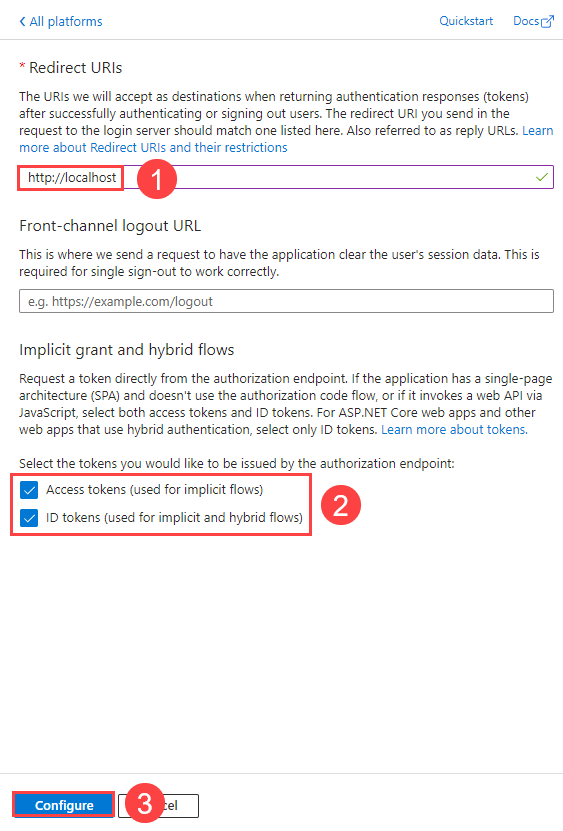Authorization setup: Microsoft Entra ID
FoundationaLLM comes with out-of-the-box support for Microsoft Entra ID authorization. This means that you can use your Microsoft Entra ID to setup authorization access to FoundationaLLM's platform.
Create the API application
Register the API application in the Microsoft Entra ID admin center
Sign in to the Microsoft Entra ID admin center as at least a Cloud Application Administrator.
Browse to Identity > Applications > App registrations.
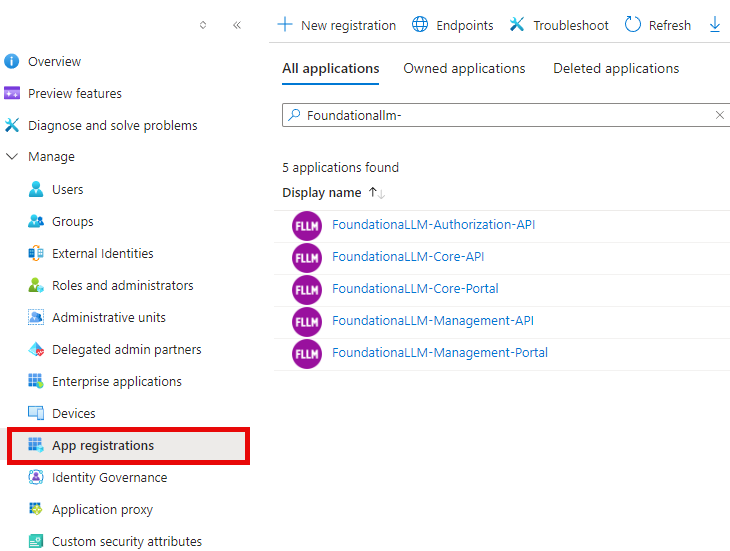
On the page that appears, select + New registration.
When the Register an application page appears, enter the name FoundationaLLM-Authorization-API for your application.
Under Supported account types, select Accounts in this organizational directory only.
Select Register.
The application's Overview pane displays upon successful registration. Record the Application (client) ID and Directory (tenant) ID to add to your App Configuration settings later.
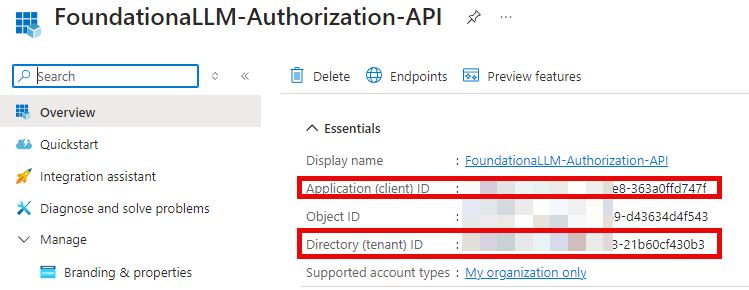
Expose an API for the API application
Under Manage, select Expose an API > Add a scope. For Application ID URI, enter
api://FoundationaLLM-Authorization, then select Save and continue, and then enter the following details:- Scope name:
Authorization.Manage - Who can consent?: Admins and users
- Admin consent display name:
Manage Authorization - Admin consent description:
Allows the app to manage data on behalf of the signed-in user. - User consent display name:
Manage data on behalf of the user - User consent description:
Allows the app to manage data on behalf of the signed-in user. - State: Enabled
- Scope name:
Select Add scope to complete the scope addition.
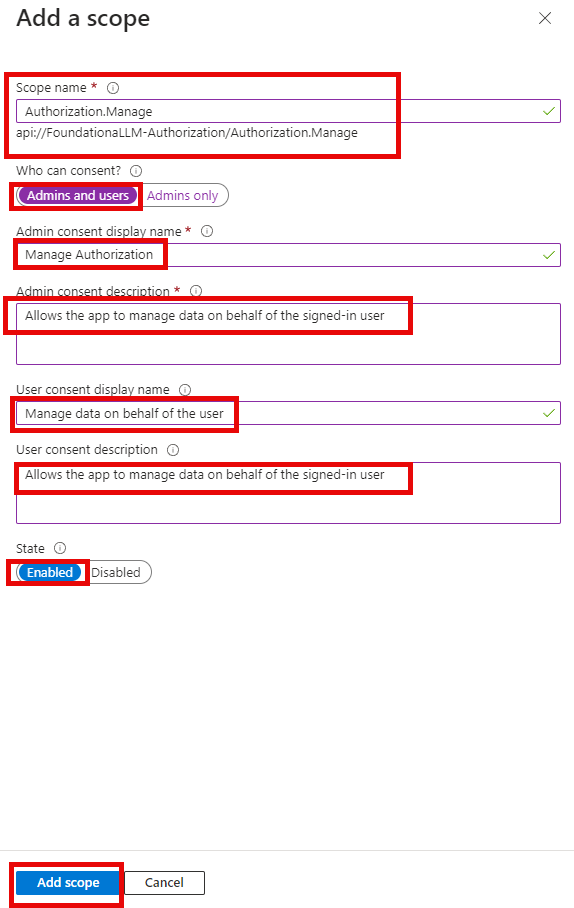
Copy the Scope name value to add to your App Configuration settings later. It should look like
api://FoundationaLLM-Authorization/Authorization.Manage.
Update the client application manifest
Under Manage, select Manifest.
Locate the
accessTokenAcceptedVersionproperty and set its value to2.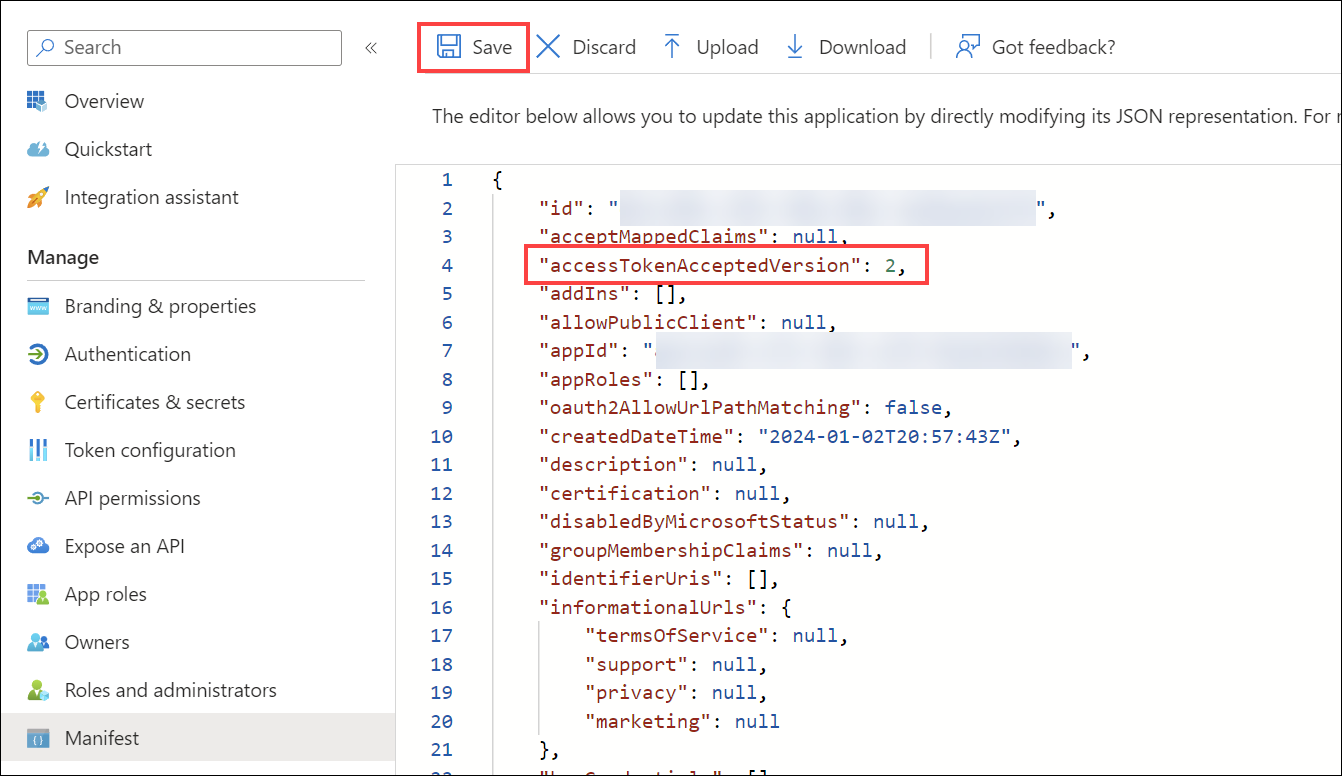
Select Save at the top of the page to save the changes.
Configure Authentication Flows
Navigate to the Authentication tab. Select Add a platform. On the Configure platforms pane, select Web.
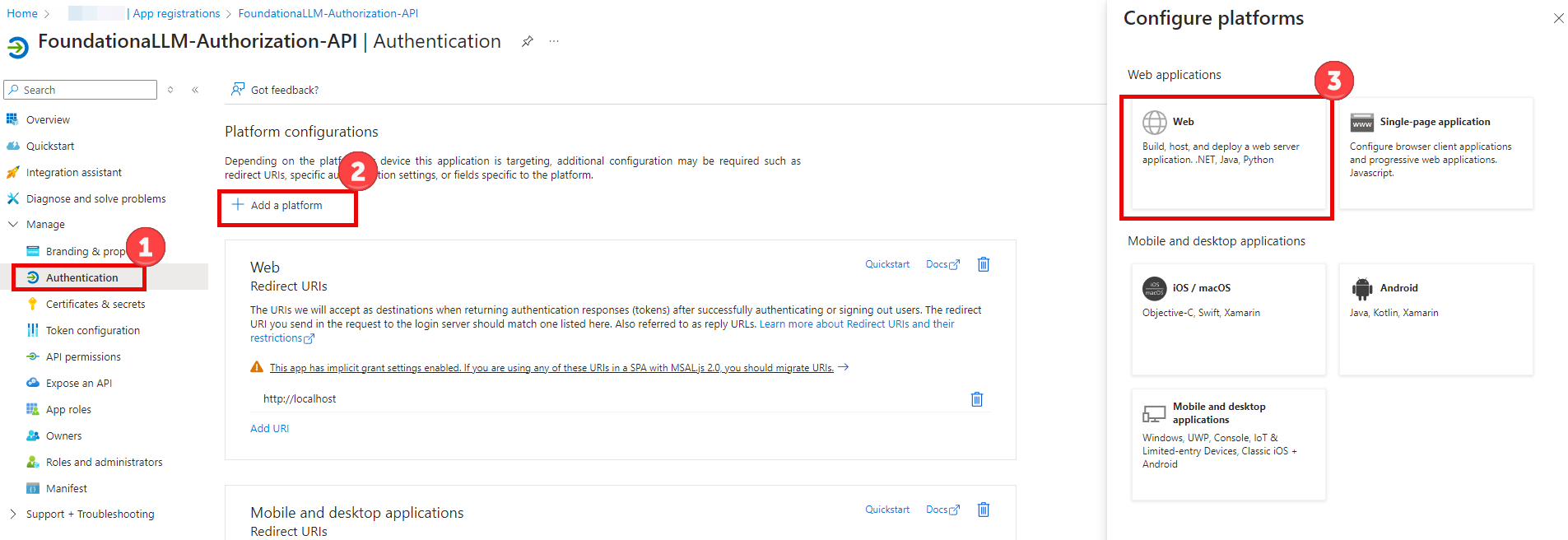
Enter
http://localhostunder Redirect URIs. Then, below Implicit grant and hybrid flows, select both Access tokens and ID tokens. Finally, select Configure.